How to Inject More Humanity into Your Web Design Brand

Your messaging—one-on-one with clients as well as in your marketing—needs to sound empathetic and human. In this post, we’ll look at some ways to do that along with real-world examples.
As a web designer or agency owner, you’re not some faceless entity that sells a pre-packaged product to customers that will never meet or interact with you. As such, prospects and clients need to see the human behind your brand, no matter how much or little you reveal.
For some clients, finding a designer whose work style, personality and values align with their own matters a good deal. And, to be honest, if you want to have positive relationships with clients that you can leverage into ongoing work, positive online reviews and client referrals, then letting prospects and clients get to know you is a good idea.
Below we’ll look at five things you can do to create a realistic and relatable persona for yourself as you interact with prospects and clients.
How Designers Can Bring a More Human Approach to Their Communications
You can imagine how difficult it would be to turn prospects into clients and to subsequently turn clients into cooperative partners if they don’t respect or like you. So every interaction you have with them has to be infused with a genuine human touch.
This will be different for everyone. I’ve known some web designers who are very bubbly by nature and win clients over with their charm and transparency. Others are more serious, but earn the respect of their clients because they are results-driven and genuinely care about helping clients achieve their goals.
You need to tap into who you are and then bring it out in your communications with prospects and clients. This applies just as much to client meetings and email communications as it does to the content you put on your website and social media.
Let’s take a look at some ways to accomplish this along with real online examples from web designers so you can get a sense of the different ways you can pull this off.
(Note: These same principles can be applied to your person-to-person interactions with clients. It’s just easier for me to grab publicly visible content for these examples.)
1. Use Your Pronouns Wisely
Which pronouns you use in your communications can have a big impact on how prospects and clients look at you. For instance, here’s a screenshot from the Up & Running Design Co. homepage:
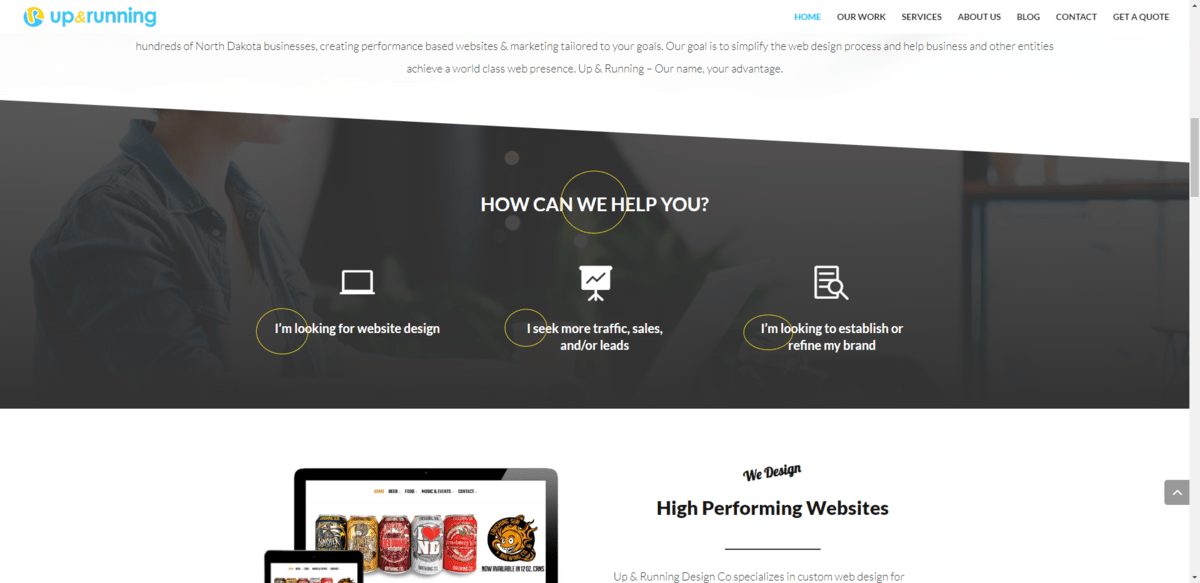
The top of the section asks visitors: “How Can We Help You?”
The conversational approach to copywriting is an effective one. It lessens the intimidation of something as technical as a website or app. Posing it as something that “we” can help you also helps to soften up the exchange.
The options are just as well phrased. They read like actual responses that a prospect would give:
- “I’m looking for website design”
- “I seek more traffic, sales, and/or leads”
- “I’m looking to establish or refine my brand”
Compare this to webpages that don’t use pronouns like “we,” “I” or “you.” For instance, this section could’ve been written as follows:
Our Services
- Website Design
- Lead Generation
- Branding/Rebranding
By removing the person from the copy, it feels more transactional and cold, doesn’t it? By rephrasing your copy in a more conversational and personal manner, it starts your conversation with prospects and relationship with clients off on a more positive foot.
2. Show How Passionate You Are About What You Do
Have you ever gone to the store or out to eat somewhere and felt like the person serving you couldn’t wait to get you out of there? You were just one of a number of customers and your experience and satisfaction didn’t really matter. They just needed to get the transaction over and done with.
One of the ways to keep clients from feeling as though they’re just a big payday you’re working toward is to let them see how passionate you are about what you do. You can do this in every interaction you have with your clients by showing them how excited you are to build their digital product and the new and innovative ways you’re going to do so.
But there are other ways to demonstrate your passion and dedication to what you do. Get Em Tiger, for instance, posts really interesting content to their Instagram page on a semi-regular basis:
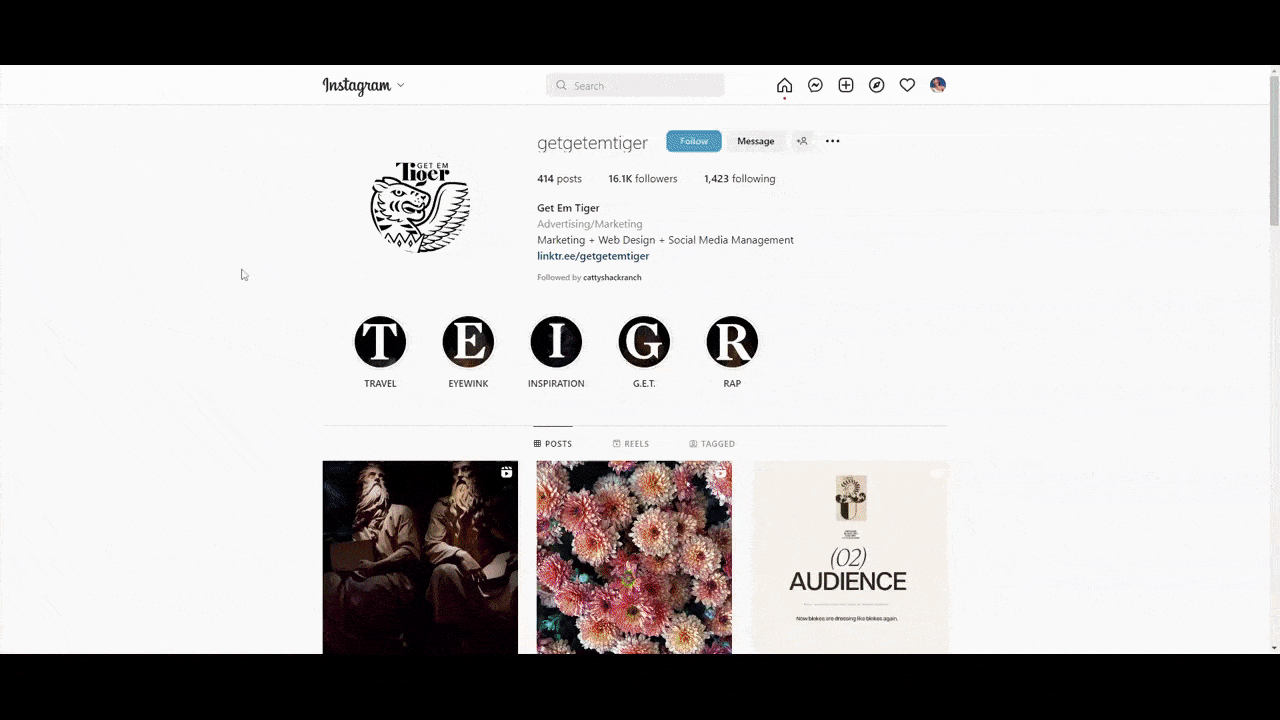
It doesn’t feel forced nor does it feel like it’s there so that they can get more business. While some of their posts show off their work, there are no calls to action here.
Everything feels like it’s done as inspiration strikes. In some cases, it’s a beautiful work of art they stumbled across. In other cases, it’s a post dedicated to their travels around town and showing local businesses some love.
Creating content for your website and marketing channels that revolves around your love for design and what you find inspiring is a great way to let prospects and clients get to know more about you. You may find other ways to demonstrate this to them as well.
3. Let Your Personality Shine Through
There are lots of designers out there—and many who say the same thing as you. They acknowledge the prospects’ problems and present them with similar solutions to your own. But if you can get a prospect to smile, laugh or nod their head at something you wrote or designed, that would definitely make you stand out from the crowd.
There are a couple of great examples that I think demonstrate this. The first one is from Studio North:
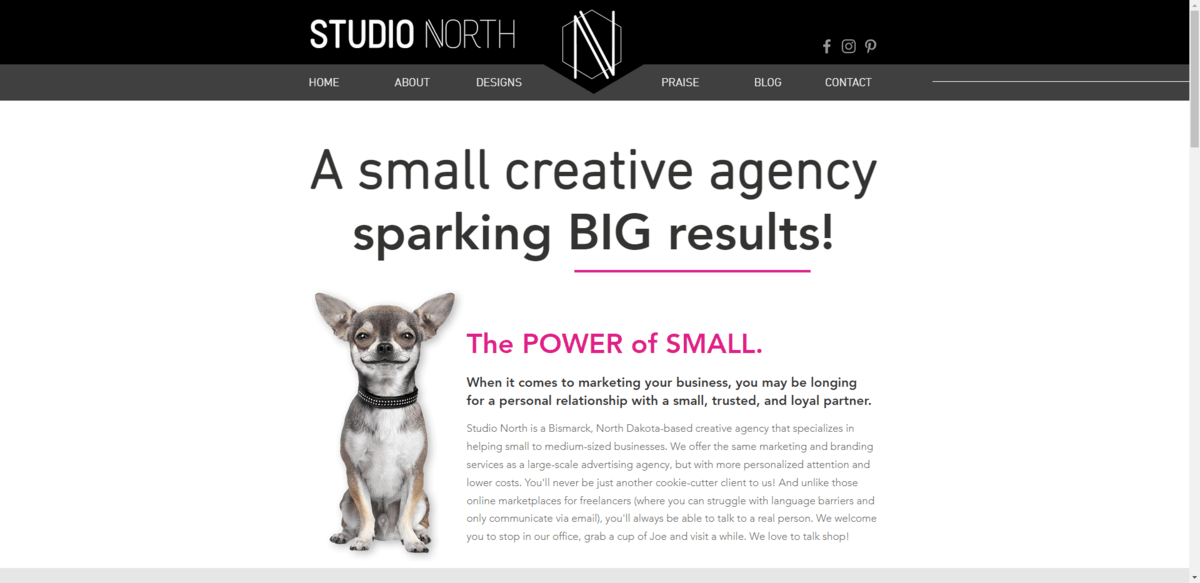
The hero section summarizes the benefits of choosing a smaller design agency to partner with. But it’s not just the relatable messaging that makes an impact on readers. It’s the smiling face of the chihuahua beside it. It’s unexpected, it’s cute, and it also sends a subliminal message that, “We may be small, but we’re going to be tenacious and work hard for you too!”
Another example I really like is the Team page on the Kris Chislett website:
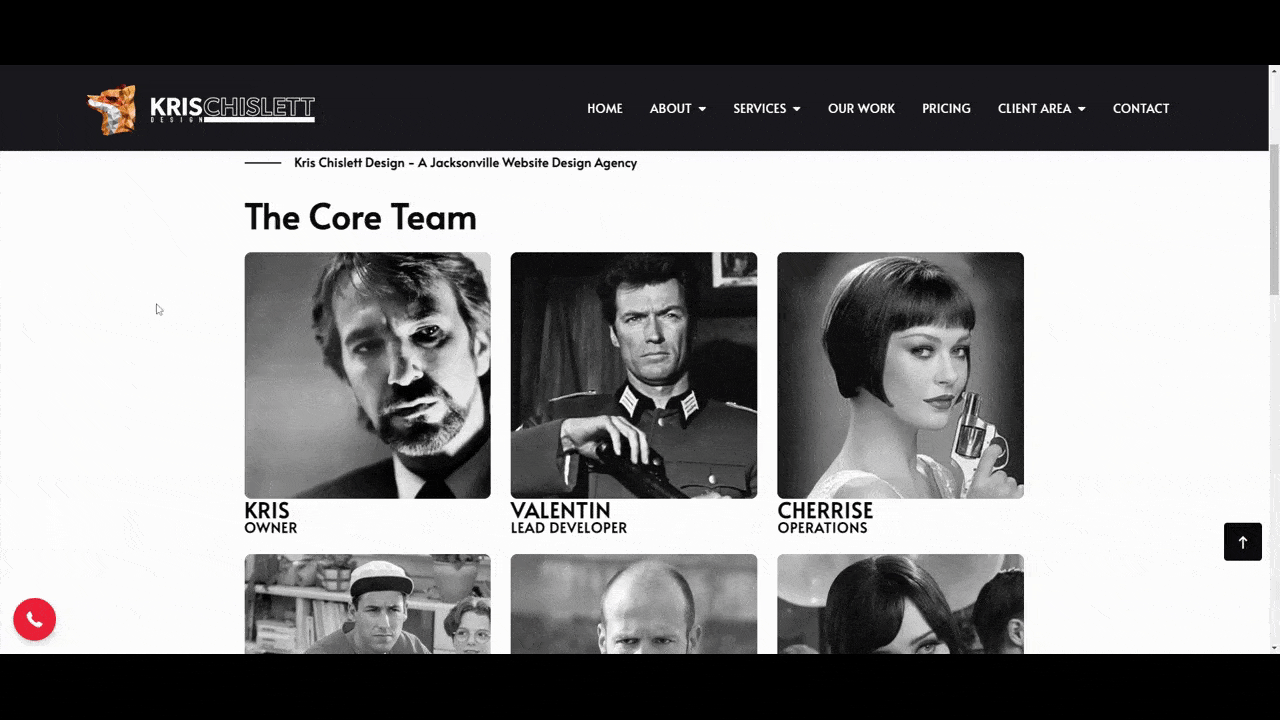
Each team member has a famous movie character representing them. When you hover over the card, it reveals a breakdown of how they spend their time each week. The first four points are pretty standard. The last ones, though, might make you giggle:
- Herding cats
- Reticulating spines
- Dropping f-bombs
- Smoking some meats
- We’re not sure. We don’t like to ask.
- Playing with her pug
- Talking everyone’s ear off
- Decorating for Christmas… In June.
- Turning it off & back on again
What I like about these two examples is they demonstrate that you don’t need to be an expert copywriter in order to create something for your site or marketing channels that’s interesting or funny.
4. Treat Your Work as Collaborations
Yes, you are the designer. And you’re going to do the bulk of the work when building a digital product for your client. However, in order to build something that truly benefits them and their target users, you need to work closely together.
On top of using pronouns that let your client know you’re in this together, your messaging should make it clear that their goals are your goals and that you only win when they do. It doesn’t need to sound as cheesy as that. In fact, it’s better if you position it in their own words.
Brand & Brush’s homepage copy has a nice example of this:
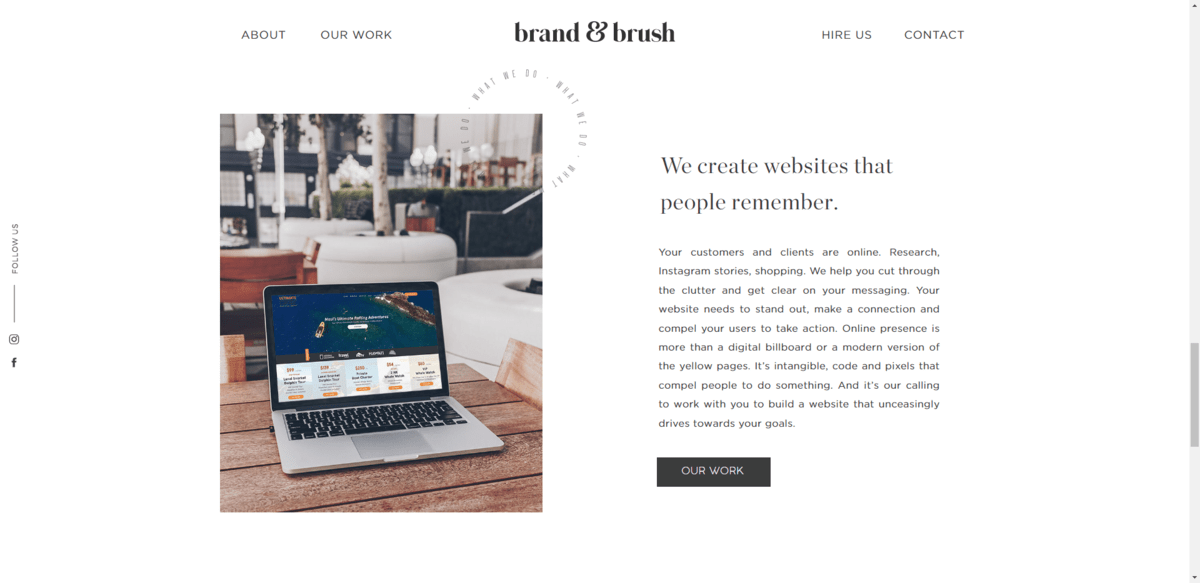
They go very light on industry jargon and speak in a way that you’d expect clients to speak. For instance: “We create websites that people remember.” Throughout the site, there’s this acknowledgement of the hurdles the prospect is dealing with and the solution is always, “We’ll do this together.”
If warm, sympathetic language doesn’t necessarily fit your brand, there are other ways to pull this off. Take a look at the Case Studies page on the COLAB site, for instance:
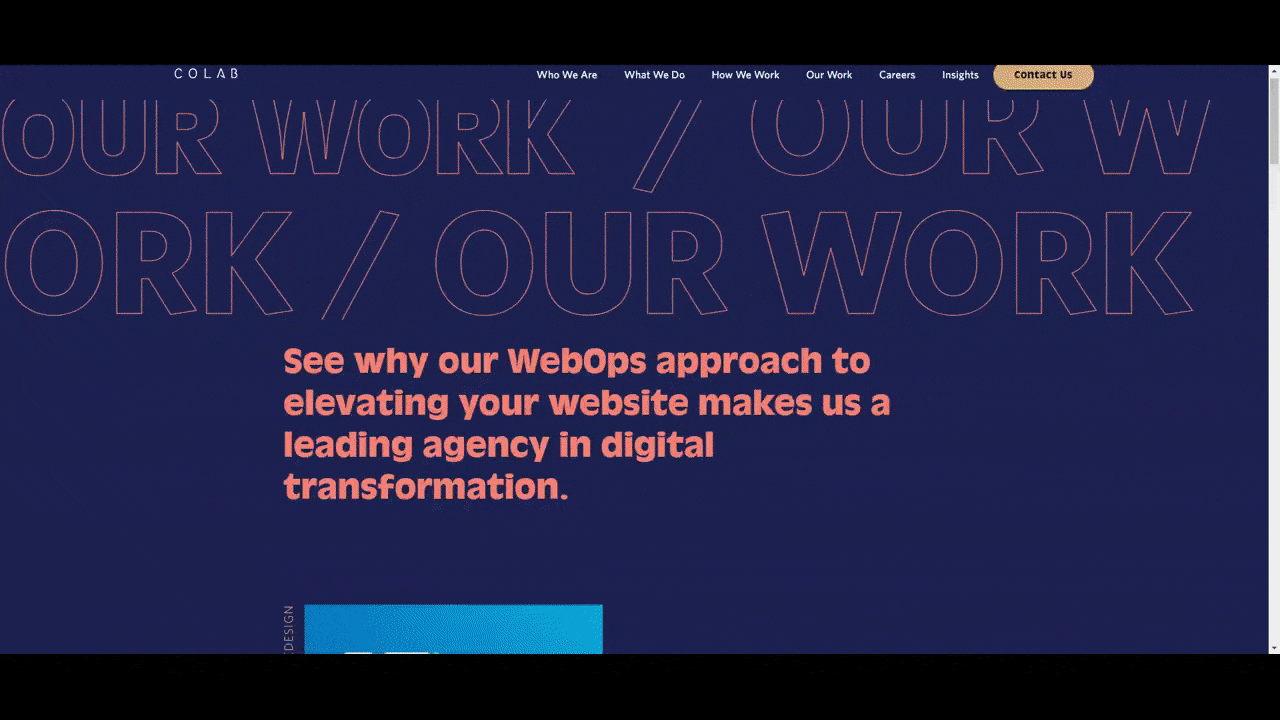
The case study headlines could have been the typical “Website for Company X” or “Mobile App Redesign for Company Y.” Instead, the headlines revolve around the goals of the product, which demonstrates that products aren’t just being built to spec. They’re being built to serve a real purpose and achieve goals.
5. Provide Value Without Asking for Anything in Return
One of the biggest problems I see in marketing these days is that it’s often all about the company who created the post or content. It’s self-promotional and the call to action is clearly “HIRE US!”
I’ve always found the 80/20 rule to be relevant here. 20% of your marketing can be self-promotional, but the remaining 80% needs to offer value for the sake of being helpful.
Take a look at the blog page for South Made Marketing:
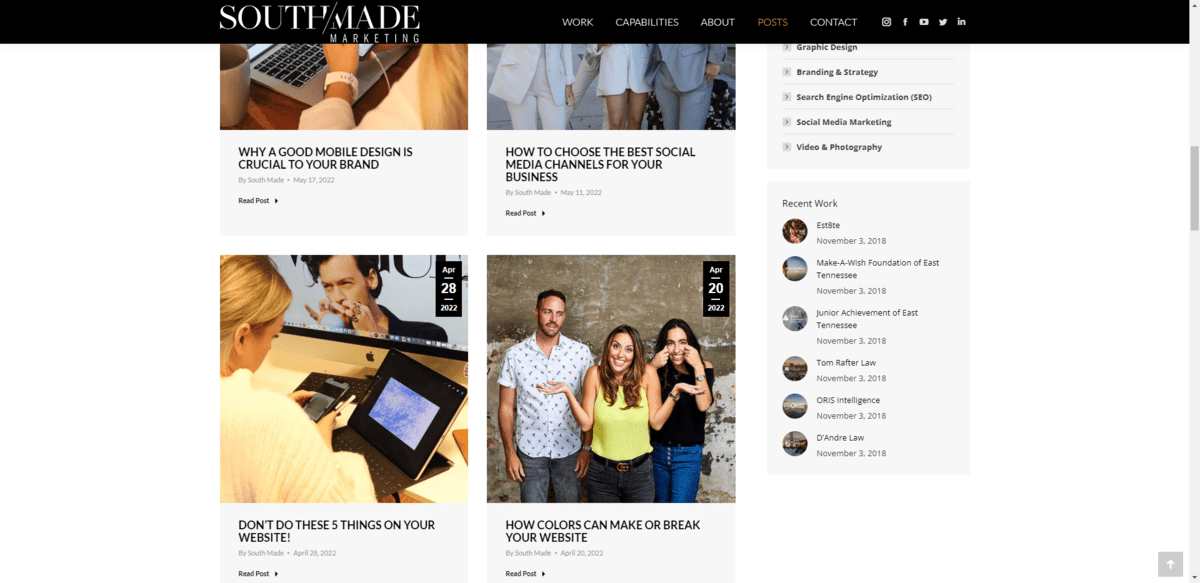
While you may find promotional internal links at the end of some of these posts, that’s not the primary focus of the content. Not usually, from what I can tell. Instead, what this agency has done is create content that would be useful for fellow designers as well as business/website owners who want to do their own design and marketing.
For instance, posts cover things like:
- Video marketing
- Mobile design
- Color theory
- SEO
- Typography
Doing the same thing on social media is just as important. Rather than only share your own content, share content from others. Get involved in other conversations and respond to comments on your posts. Also, when sharing content published elsewhere, take the time to give your own thoughts instead of just regurgitating the headline or summary from the source.
Wrap-up
First impressions matter a lot when you work in a public-facing capacity. So too do the impressions you leave people with along the way. If you want to maintain creative control of your projects along with the respect of your clients, then you need them to view you as an ally and a partner instead of just a vendor.
On top of being good at what you do, you’ll have to give them a glance into who you are as a person.

Suzanne Scacca
A former project manager and web design agency manager, Suzanne Scacca now writes about the changing landscape of design, development and software.

